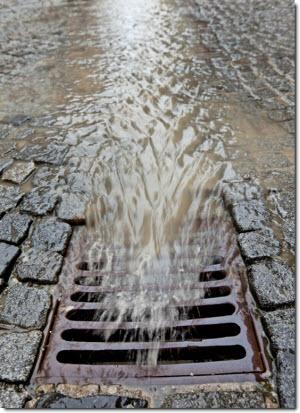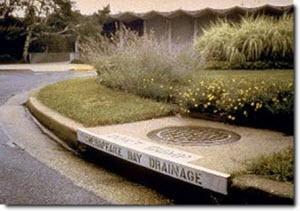Sources and Solutions: Stormwater


In undeveloped areas precipitation typically soaks into the ground. However, when buildings, parking lots, roads and other hard surfaces are added to the landscape, the ground cannot absorb the water. Water from rain or snow storms, known as stormwater, instead flows over streets, parking lots and roofs and into a water body or storm drain. Urban and suburban areas produce much more stormwater runoff due to the high amount of paved and hard surfaces.
Stormwater runoff can contain nitrogen and phosphorus pollutants from fertilizers and pet and yard waste. During periods of heavy rainfall or snowmelt some wastewater systems are designed to occasionally overflow and discharge excess untreated sewage directly to nearby streams, rivers or other water bodies. These discharges are known as combined sewer overflows and are common in many cities nationwide.
Green infrastructure can be used to address stormwater runoff and sewer overflow problems. Green infrastructure works by slowing down the runoff, spreading it out over the land, and slowly soaking it into the ground, or in some cases reusing the water onsite. Green infrastructure is also sometimes referred to as "low impact development." These techniques also help to remove pollutants from runoff by allowing plants to filter out pollutants as the water slowly infiltrates into the ground. Some examples of green infrastructure techniques include rain gardens, pervious pavement, rain barrels and green roofs.
Learn more about what you can do to reduce stormwater runoff in your yard.
A Drop's Life Exit
